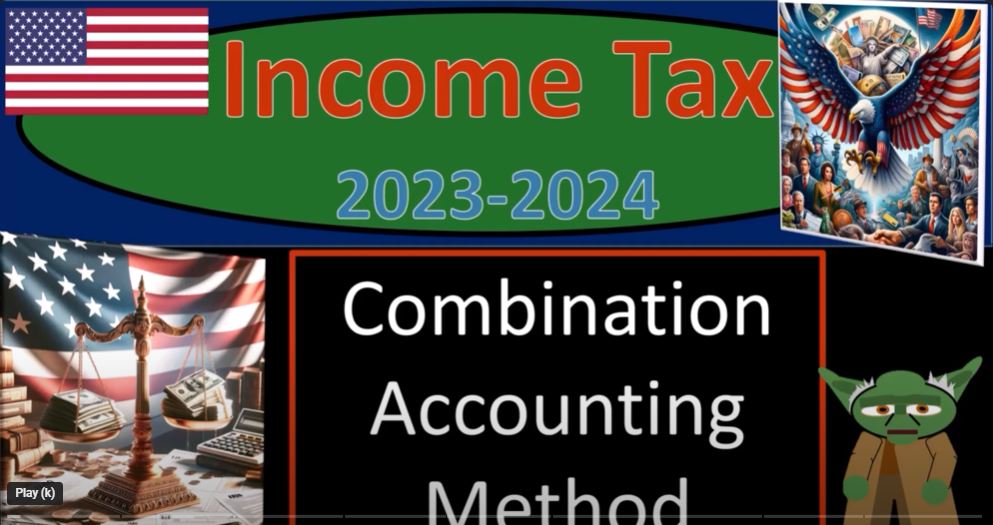As the tax season approaches, small business owners often find themselves delving into the intricate world of income tax preparation. In this blog post, we’ll dive into the complexities of tax filing for the years 2023-2024, focusing on the combination accounting method. So grab a cup of coffee and let’s explore the ins and outs of income tax preparation for small businesses.
Understanding the Income Tax Formula: At the heart of income tax preparation lies the income tax formula, akin to an income statement for businesses. We start by dissecting this formula, which begins with calculating income minus expenses, resulting in net income, and eventually taxable income. The Schedule C form, used by sole proprietors, plays a pivotal role here, reflecting business income minus expenses, akin to a profit and loss statement.
Exploring Accounting Methods: Two primary accounting methods, cash-based and accrual-based, dominate the landscape. While the former is simpler, the latter offers greater accuracy and comparability over time, often mandated for publicly traded companies. However, the IRS provides some flexibility, allowing for a combination method that suits individual business needs.
The Combination Method: Enter the combination method, a hybrid approach that blends elements of both cash and accrual accounting. This method offers flexibility, particularly useful for businesses with varied revenue and expense cycles. By strategically selecting components of cash and accrual methods, businesses can tailor their accounting practices to better reflect their financial reality.
Navigating Inventory Management: For businesses dealing with inventory, the terrain becomes even more nuanced. Inventory tracking typically necessitates an accrual method, reflecting inventory as an asset rather than an expense. However, small businesses may qualify for exceptions, especially if inventory management proves overly burdensome.
Consistency is Key: Consistency emerges as a guiding principle in income tax preparation. Once a method is chosen, consistency in application becomes paramount. Deviations may require justification and approval, emphasizing the importance of adhering to established accounting practices.
Valuing Inventory: Inventory valuation rules come into play, dictating how businesses determine the value of their inventory. Compliance with generally accepted accounting principles ensures consistency and accuracy, essential for tax reporting purposes.
Conclusion: Income tax preparation can be a daunting task, especially for small business owners. However, armed with a solid understanding of accounting methods, inventory management, and IRS regulations, navigating tax obligations becomes more manageable. By embracing the combination method and adhering to best practices, businesses can streamline their tax preparation processes and ensure compliance with confidence.
As the tax season unfolds, let’s approach income tax preparation with clarity and purpose, paving the way for financial success in the years ahead.

